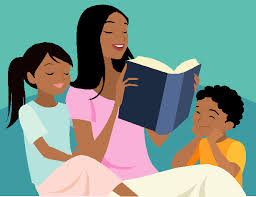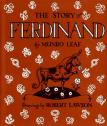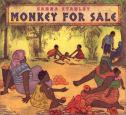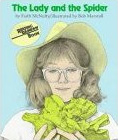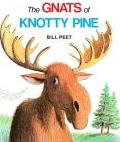Veganize Your Storytime: Books for the Littlest Vegans and Animal-Advocates
by Alissa Finley
As an adult, I relish having an excuse to read children’s books. I could easily spend entranced hours on the floor of the library’s children’s section, were it not for my 4-year-old rampaging through the shelves himself.
Pregnant with my first child, I eagerly anticipated getting to share with my little one all my favorite stories and songs from childhood. However, I soon found myself editing classics to veganize them. So, in the rhyme “This Little Piggy,” our piggies always had Tofutti instead of roast beef. And, of course, I’d encourage going “to market, to market to buy a fat FIG.”
But, I was still bothered by the ubiquitous presence of animals as food in children’s books. Not that it was the center of the plot, but just that meat was pictured on the plate during any meal in a story. Children may soon feel the dietary minority upon entering school; I didn’t want them feeling that way in our own home during storytime. I began consciously searching out books that I didn’t have to veganize, and that reinforced the values we want to share.
Some vegetarian or animal-advocacy kid’s books I’ve found disappointing, while others lay on shelves as hidden gems. Many parents will gladly spend the time to search libraries or order books that will last as favorites in their child’s collections, but don’t know what to look for. By using a review format that considers a book’s use of non-vegan foods, optimal age levels, and other items that need clarifying, such as guns or undesirable behaviors, I hope to simplify other parents’ search for that new favorite book. Pick one you like as well, because you may be asked to read it a forgettable number of times a day!
She’s Wearing a Dead Bird on Her Head!/ written by Kathryn Lasky; illustrated by David Catrow. A children’s version of the true story of the two women that founded the Massachusetts Audubon Society in 1896. Minna and Harriet are appalled and disgusted by the use of birds as fashion for ladies’ hats and determinedly set out to change things. More than just a discussion of protecting exotic birds, Minna and Harriet make it clear that no bird should be killed, including ducks for sport and birds for food (”songbird pie”). Not recommend for the youngest readers as discussion of the killing of birds is frank, with an illustration of a hunter shooting a rifle at a nest. This book is full of humor, energetic illustrations, and a wonderful historical view surrounding suffrage efforts at the time. Ages 7 and up.
The Smallest Cow in the World/ written by Katherine Patterson; illustrated by Jane Clark Brown. This is the story of a boy who dearly loves a cow that everyone else calls “the meanest cow in the world.” The boy, Marvin, lives with his family on a dairy farm and understands that Rosie the cow is mad because the farmer “took away her calf.” When the farmer sells the farm and all the cows, Marvin is heartbroken. He copes with the loss of Rosie by imagining her returning as the smallest cow in the world, and Marvin takes her everywhere in his pocket. When he takes “Rosie” to school some of the children tease him, but his sister’s friend defends him as having a wonderful imagination. Marvin’s sister then suggests that Rosie can’t come to school anymore because she is going to have a calf. Marvin fearfully asks, “Will anyone take Rosie’s calf away from her?” He is reassured that nothing will ever again happen to his Rosie or her calf. A darling and realistic story with sweet pictures and the opportunity to talk about many issues, including the lives of dairy cows, dealing with loss of a loved animal, moving to a new town, and teasing from peers. The only negative issue is that Marvin’s older sister is typically mean to him in the beginning of the story calling him “the dumbest boy in the world” and “crybaby.” She does, however, come to a place of compassion and understanding towards him. Ages 5 and up.
The Story of Ferdinand/ written by Munro Leaf; illustrated by Robert Lawson. This classic tale of a peace-loving bull remains as relevant and poignant today as when it first appeared in 1936. Ferdinand is a bull who, though surrounded by other bulls who would “butt their heads together” all day, loved nothing more than to sit under his favorite tree and smell the flowers. On the day that the fiercest bull was to be chosen for the bullfights in Madrid, an unfortunately-timed bee sting caused much snorting and jumping from Ferdinand, and he was carted off to be in the fight. Despite the bullfighters using “spears and pins” to “stick the bull and make him mad,” Ferdinand refuses to fight and instead sits in the middle of the ring and smells the flowers in the ladies’ hair. This thoroughly frustrates the bullfighters and they cart him back to the field where he happily lives out his days under the cork trees. Through the story’s backdrop of Spain’s bullfights, two messages for children can be drawn from Ferdinand’s tale. First, the ludicrous and cruel nature of bullfighting, and second, that in the face of social pressure and even outright violent provocation, the choice to refuse to cause physical harm to others is a noble one. Ages 4 and up.
Monkey for Sale/ written and illustrated by Sanna Stanley. Set in the Republic of the Congo, this story follows two girls and their trades on market day. Luzolo spends most of her five francs on trinkets, but then she and her friend discover that a local woman is selling a monkey that was caught in her garden. Saddened, Luzolo and her friend set their minds to freeing the monkey. They construct a chain of barters around the market, giving up their own trinkets, that finally ends in securing a water pot. In trade for the water pot, the woman gives the girls the monkey. Endearingly, when the monkey reaches to hold the rope that tied him, Luzolo responds, “You won’t be needing that where we’re taking you…” The girls take the monkey to edge of the jungle and wave goodbye. Ages 4 and up.
To Market, To Market/ written by Anne Miranda; illustrated by Janet Stevens. A play on the traditional nursery rhyme about going to the market “to buy a fat pig.” In this rhyming story, however, a grandmotherly woman makes repeated trips out shopping returning each time with what is usually a “food animal.” The animals make themselves quite at home while she’s gone on each expedition, and her house ends up in humorous chaos. Becoming cranky and hungry, the woman and animals return to the grocery store, to buy lots of vegetables for soup. There is a charming scene at the end with all the animals sitting around eating vegetable soup with bibs on. Uniquely illustrated with painted animals interspersed with actual photos of the house and store. My kids never tire of this story, nor do I! Vegan. Ages 1 and up.
The Deer in the Wood/ written by Laura Ingalls Wilder; illustrated by Renee Graef. A charming and beautifully illustrated story, adapted from the Little House series. Pa explains to Laura and Mary why he couldn’t kill the deer when he went into the woods to bring home meat for supper. A very gentle book for even the very young, although Pa’s gun is visible as he sits in the tree. Not vegan, as Laura and Mary say, “I’m glad you didn’t shoot them. We can have bread and butter!” (Although I have frequently changed the wording in books to veganize them. So butter could become margarine, etc.) Ages 2 and up.
Deliverance of the Dancing Bears/ written and illustrated by Elizabeth Stanley. This tale is set in Turkey where, historically, bears were made to “dance” in the town square for coins. The beautiful and authentic illustrations alone make this book worth searching out. A dancing bear spends her days dreaming of being able to fish in the streams and cuddle with her cubs, while a noble peasant himself hopes to free bears such as her. The day comes when the man has enough savings to buy the bear from her cruel “owner,” and free her. However, he soon discovers that the bear-keeper, has only captured another cub to train. The town rises up against the painful and humiliating practice of dancing bears, and hope becomes reality for the bears. Open mention of beatings and the extremely painful ringed nose-chains that hold these bears may be difficult for the very young. Age 5 and up.
Four Famished Foxes and Fosdyke/ written by Pamela Duncan Edwards; illustrated by Henry Cole. Enchantingly illustrated story with a lot of humor about a family of foxes who set out each morning to “filch fowl” while Fosdyke, their French food-loving brother, stays behind to flambé fungi. You will cheer with your children as the foxes’ attempts to capture the hens, ducks, and geese are foiled each time, and they limp home to be met by some amazing creations that Fosdyke has cooked up. The book is highly entertaining as the vast majority of the words begin with “f”, but this does make it more difficult for young children to understand, since they probably don’t know what “filch”, “fondue”, or “fracas” means. Opportunity for vocabulary enhancement! Not vegan (cheese and eggs pictured), and not even truly vegetarian (one filet of fish shown), but still the book is very vegetarian-themed, “for a fox is a fox, whatever the food.” Ages 4 and up.
The Little Hen and the Giant/ written by Maria Polushkin; illustrated by Yuri Salzman. I utterly adore this story of a big, mean, ugly Giant who loves nothing except eating eggs and the small, seemingly powerless hen, from which he steals his final handful. Kurochka, the hen, becomes so enraged that she sets off “to fix him good.” Not a book to namby-pamby anything, Kurochka swallows up anything that gets in her way including a fox, a bear and an entire lake with fish. When she arrives, she taunts the Giant from afar with insulting limericks such as, “Violets are blue, roses are red, the Giant’s a creep, and has holes in his head.” You go, Chickie! When Kurochka finds the Giant, she cleverly uses the things she swallowed previously to “get him” and he ends up sinking to the bottom of the lake after she spits the entire thing at him. A bit graphic because of the drowned giant, although no other animals were harmed, including the bear and fox. However, it is issues like this and the name-calling that lead me to recommend this book for older kids. Also, the Giant is pretty scary for most preschoolers. Inspiring story of the supposed weak standing up with the courage of her convictions to topple the strong, yet wrong, force. Vegan. Ages 6 and up.
Making Minestrone/ written by Stella Blackstone; illustrated by Nan Brooks. A simply sweet story that also serves as a cookbook. A simple story, about a group of children gathering vegetables out of a garden while farm animals frolic amongst them. Provides opportunity to talk about how vegetables grow and the different kinds of animals that are shown. Vegan. Ages 1 and up.
The Snow Tree/ written by Caroline Repchuk; illustrated by Josephine Martin. Absolutely gorgeous book detailing how various animals in the forest contribute items found in nature to decorate the holiday Snow Tree. The artwork is very detailed and realistic and cannot be praised enough. Abundant opportunity for learning about colors, animals, and the interconnectedness of woodland life. Not religious. Vegan. Ages 1 and up.
Bob and Shirley/ written by Harriet Ziefert. Based on the true story of two lobsters who were returned to the sea after people protested the sale of these especially large lobsters. The story describes how Bob and Shirley were caught by fishermen, transported to a seafood shop, but ultimately put into a display tank because of their large size. Illustrated with pictures of people protesting with signs for the release of Bob and Shirley. The book does not make the point that other fish and crustaceans shouldn’t be captured and eaten, but parents can easily use this tale to extend that thought. Wonderful book to expand thoughts of compassion to the “not-so-cute” animals. Ages 3 and up.
Scaredy Dog/ written by Jane Resh Thomas; illustrated by Marilyn Mets. A chapter book that tells the story of a girl who adopts the most fearful dog at the animal shelter, and through love and patience gives him a sense of security and confidence again. Mention is made that he must have had horrible things happen to him before his arrival at the shelter. Ages 6 and up.
Victor, the Vegetarian: Saving the Little Lambs/ written by Radha Vignola; illustrated by Julia Bauer. This books deals with the ethical issues of eating meat through the story of a boy on a farm realizing that the animals he loves are ultimately destined for the dinner table. He runs away with his two favorite lambs so that his father won’t turn them into pork chops. The book is explicit and direct about the animals’ fate, with Victor “afraid that his friends would be killed.” I think that for most children younger than 5, this is too difficult to deal with. My children knew as early as they could understand that we don’t eat animals because we want to be “nice” to them, but this is a more removed concept than the one-to-one nature of a baby lamb that is to be slaughtered as presented in this book. I would recommend Victor’s Picnic for the younger readers of the Victor series. In addition, the flow of the dialogue in this book seemed stilted. Victor’s words do not sound natural, and kids easily pick up on this. While a book for very young children dealing with the moral aspects of eating animals is very needed, this is not my favorite. Green pencil drawings. Ages 5 and up.
Victor’s Picnic with the Vegetarian Animals/ written by Radha Vignola; illustrated by Michelle N. Ary. A story about a boy invited to a vegan picnic. On the way, he sees some carnivores and is taught why, anatomically, some animals eat meat and some are vegetarians. At the picnic, Victor learns about what vegetarian animals eat and what he needs to eat to be a healthy vegan. Brown and white simple illustrations. All vegan. Ages 2 and up.
Perfect the Pig / written and illustrated by Susan Jeschke. A truly touching story of a misfit pig with wings who is taken in by Olive, an understanding woman. She loves Perfect and feeds him “the very best vegetables.” While Olive understands Perfect’s desires to fly, she is also worries about him being exposed to the world. Olive tries to “hide the bad things in life from him,” such as the ham hocks for sale in the butcher’s window. Perfect becomes lost flying one day, and is captured by a man who forces him into a sad life of performing tricks. Olive continues searching for Perfect, and finally rescues him. Together they move to the county, tend a garden, and live in “peace and happiness.” Darling gray pencil illustrations. This book is useful for discussion regarding animals for food and entertainment. Vegan, except for images of butcher shop. Ages 5 and up.
The Lady and the Spider/ written and illustrated by Faith McNulty. Endearing, simply drawn tale of a woman, a head of lettuce, and the spider who inhabits it. The reader sees the story unfold from two sides, that of the woman tending her garden, and the spider that lives her life in a head of lettuce. The drawings are very realistic, so that the spider is not made to look unnaturally cute and can then be appreciated more in the child’s own real experiences. After discovering the spider when she brings in the lettuce, the lady gently returns the spider to the garden, free to find a new home.
Serendipity/ written by Stephen Cosgrove; illustrated by Robin James. Story of a fuchsia-colored, aquatic, dragon-type creature, who hatches and goes in search of “what she is.” On the way to the World Fish Meeting, Serendipity encounters a trapped dolphin. She frees him and then flips the fishing boat over, gently placing the fishermen on top of the capsized boat. Ocean pollution by garbage and oil is also addressed, and Serendipity cleans up the water by splashing so much that all the sea gunk goes back up to the “land-dwellers.” Once Serendipity arrives at the meeting of the fishes, she becomes ordained as the guardian of the seas. Colorful illustrations. Ages 3 and up.
The Gnats of Knotty Pine/ written and illustrated by Bill Peet. A clever tale of how the only forest animals able to foil hunters on the first day of hunting season is the gnats. After being scoffed at by all the larger animals, the gnats prove that in numbers that have the power to make a change. An empowering moral for little beings, this story encourages looking for solutions in unlikely places, as well as addressing the issue of hunting from the animals’ viewpoint. Although the story is told with a lot of humor, the overt portrayal of guns and discussion of being shot could be scary for young ones. Ages 6 and up.
A Turkey for Thanksgiving/ Eve Bunting; illustrated by Diane de Groat. A hilarious story of a moose, rabbit, goats, and sheep on a search through the forest for “a turkey for Thanksgiving.” The turkey mistakes their intent for the usual desire for a turkey at the table, and when found, fearfully goes along to the moose’s’ cottage. Upon arriving, the other creatures joyfully present the turkey with a chair at the table, and he says, “It’s even nicer to be AT your table and not ON it.” All the Thanksgiving foods are nuts, greens, and twigs, and thus vegan. Due to the laugh-out-loud humor in this book, it’s one of my favorites. Ages 2 and up.
Silly Tilly’s Thanksgiving Dinner/ written and illustrated by Lillian Hoban. One of many tales about this absent-minded mole, Silly Tilly, who forgot to invite guests to her Thanksgiving dinner. The various creatures arrive anyway bringing with them yummy vegan dishes. Mr. Turkey arrives last with popcorn, saying, “You can’t have Thanksgiving without Mr. Turkey!” All vegan. Ages 3 and up.
Tales of the Teezles: The Teezles and the Snow Rabbit, The Teezles and the Polluted Pond, The Teezles and the Deer’s Dilemma, and The Teezle Wedding Day Rescue / Terry Barber; illustrated by Wizard Art. This is a series of four, large-sized books that deal with saving animals and taking care of the environment. While none of the books address being vegetarian overtly, there is no mention or illustration of meat-eating either. The Teezles are little woodland mice-sized creatures that all have names like Fern Oak and Linden Beech and use herbal medicines. In The Snow Rabbit, they rescue a rabbit from a leg-hold trap, rehabilitate him, and return him to the human family who loved him. In The Polluted Pond, a farmer dumps drums of “poison” into a pond sickening (quite graphically) all the animals nearby. The teezles help restore the pond, nurse the animals, and dump the empty drum back on the farmer’s land (and nearly on the farmer). In The Deer’s Dilemma, a fawn needs help because his mother has been captured so as to be taken to the zoo. The teezles devise an elaborate escape plan for the mother deer and thwart the captor even when he has a gun. Finally, Wedding Day Rescue is a story about how two teezles pledge to protect and love each other, and on the same day rescue a mouse that has gotten stuck in bottle discarded in the forest by a “Man-animal.” While the graphics are very colorful and look geared to a preschool audience, parents should be aware that the issues are not “dumbed-down” and the injuries and situations of the animals are explicit. An undesirable facet in this series is the portrayal of a character named Clumsy Tub. He is meant to be a point of light-hearted humor, but is actually a chubby teezle that is snickered at by the other teezles for splitting his pants or falling down. I tolerate and clarify that part of the series because the subjects the stories deal with are so hard to find for young children’s books.


